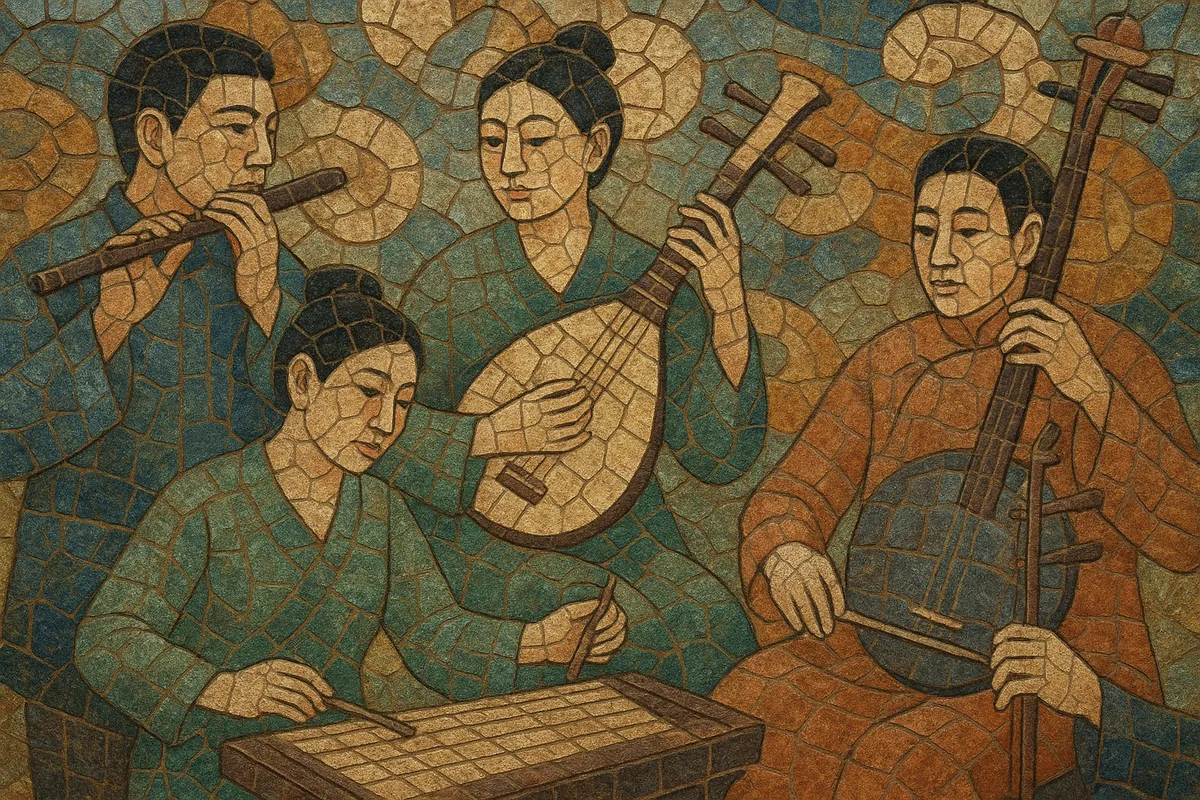Jiangnan sizhu (literally “silk-and-bamboo” from the Jiangnan region of China) is a refined chamber tradition centered on string (silk) and flute (bamboo) instruments. Typical ensembles feature dizi (transverse bamboo flute), erhu and other huqin fiddles, pipa (pear-shaped lute), sanxian (three-string lute), yangqin (hammered dulcimer), and sometimes sheng (mouth organ).
The music is heterophonic: all players render the same qupai (fixed tune) simultaneously while decorating it with individualized ornaments, resulting in a shimmering, interwoven texture. Performances often unfold in an arch of tempo—from slow, spacious introductions to fluid moderate sections and lively climaxes—suited to intimate venues like teahouses and guild halls. The melodic language is largely pentatonic within traditional Chinese modal systems and cyclical rhythms.
Jiangnan sizhu took shape in the Jiangnan (“south of the Yangtze”) region—centering on today’s Shanghai, Suzhou, and Hangzhou—during the late Qing period. It crystallized in urban teahouses and merchant guild halls where amateur societies and artisan-musicians cultivated small chamber ensembles for social listening and leisure. The term “silk-and-bamboo” references the core timbres: silk-stringed lutes and fiddles alongside bamboo flutes.
The tradition is built on qupai (fixed tunes) that are elaborated collectively. A signature performance practice is heterophony: players simultaneously ornament the same melody, creating a rich, constantly shifting surface. Suites commonly progress from slow to fast tempi, aligning with Chinese concepts of ban (beat/metrical cycle) and yan (phrasing) and exploiting modal color within the gong–shang–jue–zhi–yu (pentatonic) framework. The "Eight Great Pieces" (Ba Da Qu) and allied tune families became core repertoire in the 19th–early 20th centuries.
Through the 20th century, Jiangnan sizhu moved from teahouses to concert stages and conservatories, where notation, pedagogy, and ensemble balance were formalized. Master performers from Shanghai and neighboring cities helped standardize stylistic nuances and shared repertory. In the PRC era, aspects of Jiangnan sizhu performance practice contributed to the sound and scoring of modern Chinese folk orchestras (guoyue) and informed contemporary fusions. Today, it is recognized as an emblematic regional chamber genre, performed by professional troupes and community clubs alike.


